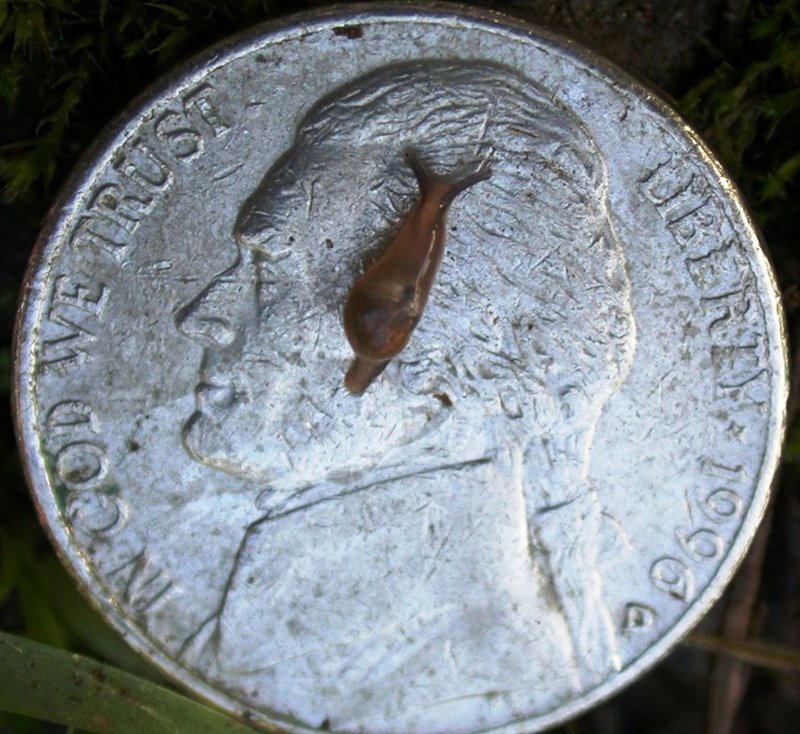DOH: Ten Tips to Prevent Rat Lungworm Disease

Rat lungworm disease can be carried by tiny slugs and snails, such as the one seen here on a nickel. Hawai‘i Department of Health photo.
Rat lungworm disease is a serious, sometimes fatal infection. The risk exists statewide in Hawai‘i, but it is very prevalent in Puna on the Big Island.
Rat lungworm disease is a form of meningitis that can affect the brain and spinal cord.
The most common symptoms include severe headaches and, neck and back stiffness, but symptoms may vary widely from person to person.
Symptoms may also include skin tingling, pain, sensitivity to light, hallucinations, nausea and vomiting.
The most serious cases experience neurological problems and severe disability, sometimes resulting in coma and death.
Rat lungworm disease (angiostrongyliasis) is contracted when a person becomes infected with the parasite Angiostrongylus cantonensis. This often happens when a person accidentally consumes raw or undercooked infected slugs, snails, freshwater shrimp, land crabs or frogs.
The Hawai‘i State Department of Health urges the public to take the following 10 precautions to prevent rat lungworm disease:
- Carefully inspect and wash and all fruits and vegetables under running water, especially leafy greens, in order to remove any tiny slugs or snails, regardless of whether the produce came from a local retailer, farmers’ market or backyard garden.
- Wash fruit before peeling or cutting it. Even if the fruit has a rind you won’t be eating, like pineapple, it should be scrubbed before being sliced so there’s no chance of contamination as the knife passes through the rind or peel into the edible flesh.
- Store all food and drinks in sealed containers to prevent contamination.
- Cook your produce. Heating veggies to at least 165 degrees Fahrenheit for a minimum of 15 minutes will kill any parasites.
- Control snail, slug and rat populations—especially around home gardens—to curtail the spread of rat lungworm disease. Make sure to follow label instructions when using bait, and keep pets and children away.
- Gardeners, farmers, food handlers and processors should increase diligence in controlling slugs, snails and rats on the farm and in processing/packaging facilities.
- Don’t drink from the garden hose. Tiny slugs and snails can crawl into the hose opening and be swallowed.
- Supervise children playing outside, especially while on the ground. Watch what they put into their mouths and make sure they aren’t accidentally eating slugs, snails or other pests.
- Scrub hands, nails and forearms after playing or working outdoors.
- Cover water catchment tanks. Make sure slugs and snails cannot get in.
One idea you could try at home to help reduce the risk of rat lungworm disease involves setting a slug and snail trap using beer. Snails and slugs love beer. Fresh beer seems to work best, according to the link below. Some report that darker brews are the most effective. Click here to learn how you can set up a deadly “slug pub.”
More information about the signs and symptoms of rat lungworm disease may be found online or downloaded here.
The first of a series of public service announcements about rat lungworm disease prevention is posted on the Hawai‘i Department of Agriculture’s website.






